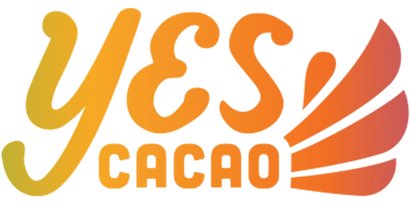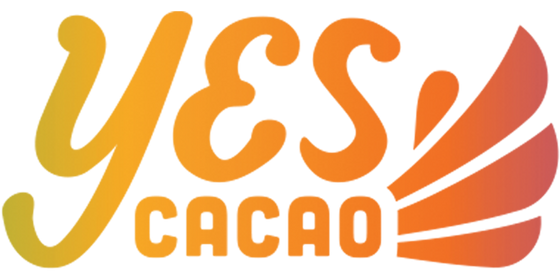Chocolate Education
HERE'S WHAT MAKES US DIFFERENT

CHOCOLATE 101
Chocolate is a product of the cacao bean, which is classified as Theobroma Cacao. It grows in tropical areas, ~20 latitudinal degrees North and South of the equator, in an equatorial belt called “The Chocolate Belt”. Theobroma Cacao can be called cacao (ka-kow) or cocoa (co-co). To better learn this plant, Yes CaCao has chosen definitions for each: We refer to cocoa as commodity-based, plantation grown, enslaved beans, often sprayed with chemicals, “liquidos”, and even “organic” pesticides. We use the word cacao to describe beans that are sought after for nutritional density, growing organically in biodiverse ecosystems, and revered for it’s historical relevance.
We consider cacao a plant medicine. Theobroma Cacao literally translates to “Food of the Gods”, and might be why humankind is so attracted to this substance. The legends and origin stories associated with Cacao transcend our known history, deep into tribal mythology and extra terrestrial arena that our culture considers taboo. We like that kind of stuff.
To make chocolate from the cacao bean, it is a long and labor-intensive intersection of art and science:
- Ripe beans are harvested from cacao pods (about 30-40 beans per pod), and scooped out into piles or directly into bags for transport. The beans are enveloped by a sweet white and fleshy pulp that provides the sugar necessary for sprouting and fermentation of the beans.
- The fermentation step takes 3-5 days. This step is key in flavor development, especially if the beans will skip the roasting process. One of the coolest aspects of the fermentation process is the massive transformation of biological life! Microorganisms from the whole environment where the cacao was growing play a role in the bio-intelligence of the cacao bean. The better the fermentation, the more we see a delicious bean with high bio-availability.
- In a best case scenario, the beans are sun-dried until they are ready to be winnowed (separation of the husk from the bean). This can take a few more days, especially if the humidity is high, like in an El Niño year. If the processing method is not fully sun dried, then it’s gas dried. Yes CaCao only uses sun-dried cacao because it fits our ethos and our preference for minimal processing, plus the sun is probably whispering secrets to the beans that we don’t want to rush ;)
- Once the beans are dried, then winnowed to remove the husk, the remaining beans now “nibs”, go into a stone grinder. Hours of friction reduce the particle size until the mouthfeel is smooth to the palate. This form of cacao is called “Liqueur” or “Paste” if it is 100% cacao, or “couverture” if it has been mixed with sugar (and in our case, botanicals).
- The next step uses contrasting temperatures to heat and cool, and then subtly heat the chocolate again, which interlocks the lipid crystal formations in a process called “tempering”.
- Now we pour the tempered chocolate into moulds and allow curing/setting in a cool area. The best known results of a well tempered chocolate is the reflective surface sheen and the loud “snap” sound when breaking the chocolate (that’s super satisfying).
To learn more about chocolate, subscribe to our newsletter (below) and follow the wild and wishful journey of YES!


